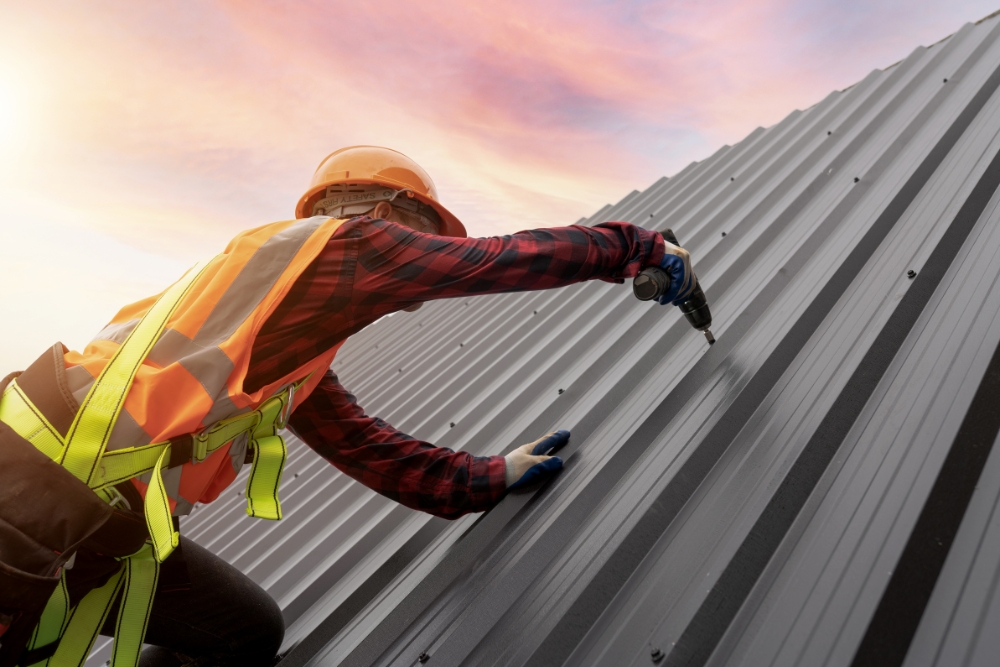Building Envelope Upgrade: Can Metal Panels Breathe New Life into Aging Buildings?
When upgrading a building’s envelope, facilities managers and designers should use materials created to protect aging structures while modernizing their visual aesthetics.
The building enclosure separates the interior from the environment, shielding it from external elements. Most aging structures were created with outdated materials, decreasing their thermal efficiency and providing less protection.

Metal panels may be the optimal solution for different types of commercial and industrial facilities. Metal use has increased throughout the construction industry, providing many structures—old and new—with effective building envelopes.
Benefits of Metal Panel Envelopes
Metal panels positively impact aging buildings. Their modern technology and lightweight materials can lead to the following benefits:
Versatility
Metal panels add new, modern architecture and design to old buildings. They can be installed vertically or horizontally and come in various colors, sizes, and finishes. Structural insulated panels are highly customizable, coming in large sizes with thicknesses ranging from 4.5 to 12.5 inches.
Aging building materials like wood, brick, and stone are more difficult to handle, making them less versatile and adjustable. Facilities managers and designers can redesign structures with metal panels to fit their visions.
Sustainability
Building materials are essential for many industry professionals and facilities managers who are going green. Metal is considered a sustainable material, making it highly useful to civil engineers who focus on reducing the carbon footprint of new buildings through environmentally friendly resources.
Metal panels offer high thermal resistance, improving energy performance. They produce an airtight, moisture-resistant envelope, reducing greenhouse gas emissions and increasing energy efficiency. The panels are 100% recyclable, taking up little to no landfill space.
Construction Time
Metal panels are designed to be lighter and easier to maneuver than older building materials, making transportation and construction more efficient. They come pre-engineered, removing cutting, punching, and drilling time.
Metal panels are built to last and require little upkeep, saving operational time for maintenance supervisors and facilities managers. They can also be constructed off-site, which saves time spent transporting materials and also reduces emissions.
Durability and Safety
Metal panels are made to last. They’re designed for flexibility and have the strength to withstand heavy wind, rain, and even hurricanes. They can significantly outlast and outperform older building materials. For example, metal roofs can last 40 to 70 years, whereas asphalt or wood shingles last between 15 and 40 years.
Metal is resistant to corrosion and mold, making it safer than most construction materials. Because it is an inorganic compound, metal can’t provide a food source for mold to develop. This attribute protects it from rotting, allowing it to outlast other items.
Maintenance
Aged buildings are often built with materials that use multicomponent systems. The various parts mean they can fail more easily, requiring consistent monitoring and upkeep. Since metal uses a one-panel system, it is easier for maintenance supervisors to find leaks and diagnose other issues.
Metal’s composition makes it easy to clean, as it doesn’t react to dirt and natural elements. Its nonporous surface protects it from absorbing unwanted particles that could potentially break down a material. Facilities managers can easily wash metal panels with water and soap.
What Are Metal Panels Made Of?
Metal panels are made from a variety of metals. Selection can vary based on the project, as buildings have different needs to fit their climate, purpose, budget, and more. Panels can be made from:
- Aluminum
- Copper
- Zinc
- Steel
- Metal composite material
- Galvalume
Metal Panel Envelope Locations
Metal panels can be used in many aspects of construction. They are commonly implemented in roofs and walls to upgrade building envelopes.
Roofs: Builders can replace old roofs with metal panels to increase service life. Metal roofs are a durable, flexible option for all structures and are highly recommended in areas with inclement weather.
Walls: Metal panels can add decades to buildings’ life spans. With proper maintenance and care, they can last up to 100 years and reduce the need for replacements. Panels are typically applied over framed walls and can fit various structures.
What Types of Buildings Can Metal Panels Save?
Upgrading building envelopes can add years to the lives of aging buildings. Metal panels can be an effective solution to any structure, from small to industrial-sized. Metal envelopes can have a great impact on these three types of buildings:
Recreational Facilities: Aging sports venues and recreational facilities need to be rebuilt with modern materials to increase thermal performance, lower environmental impact, and improve sound absorption. Metal panels enable buildings to absorb sound waves, improving indoor sporting events.
Airports: Metal panels are commonly used for aircraft hangers because they can be efficiently installed. They are also resistant to fire and can handle extreme weather conditions, making them a safe choice for airport construction. Metal’s thermal insulation keeps airports at a stable temperature.
Schools: Schools are one of the most common buildings in need of reconstruction. The average age of instructional buildings is 49 years old, meaning many are built with outdated materials. In terms of upgrading the building envelope, metal panels offer high thermal efficiency, reducing moisture and mold. Metal panels minimize the risk of indoor air pollution, ensuring student safety.
Add Life to Aging Buildings with Metal Panels
Metal panels are an excellent option for facilities managers and designers to update building envelopes. They are built with materials made to last against environmental damage, aid sustainability efforts, and produce modern, beautiful structures.
Emily Newton combines her passion for operations management with her expertise to deliver content that resonates with facilities managers. Newton has been published by several industry publications.
The post Building Envelope Upgrade: Can Metal Panels Breathe New Life into Aging Buildings? appeared first on Facilities Management Advisor.

